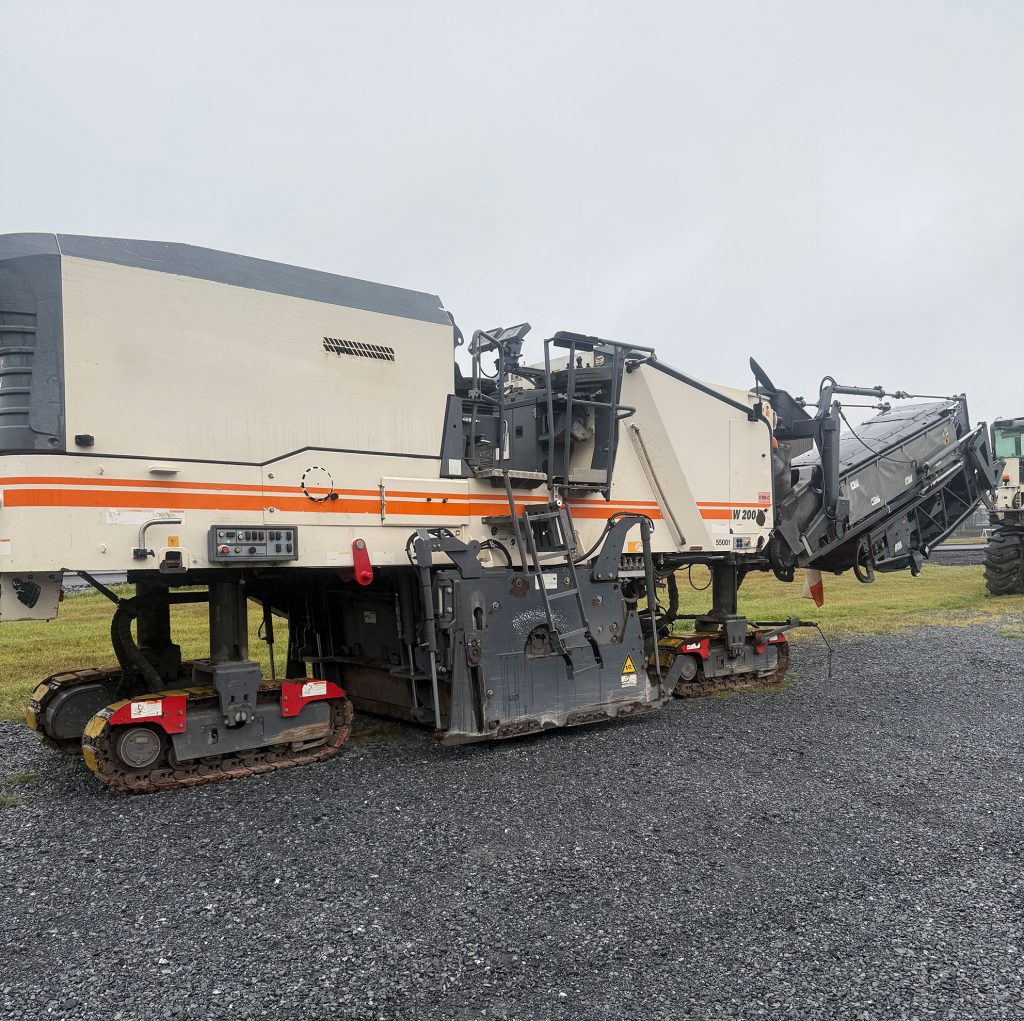
Milling machines, also known as cold planers or asphalt milling machines, have become essential in the construction industry, particularly in roadwork. Over the decades, these machines have evolved significantly, transforming from simple, manual devices to highly sophisticated, automated systems that enhance productivity, precision, and sustainability. This blog explores the history, advancements, and impact of milling machines in construction.
Early Beginnings: Manual Milling
The concept of milling in construction dates back to the early 20th century. Initially, the milling process was labour-intensive, involving workers manually scraping asphalt or concrete surfaces. The first milling machines were rudimentary, powered by steam or manual cranks. They were slow and limited in capability, suitable only for small-scale projects.
These early machines were used primarily for creating a rough surface before laying new asphalt. They were not capable of removing thick layers of material or achieving the precise cuts needed for modern road resurfacing. The need for more efficient methods became apparent as road construction boomed with the rise of the automobile industry.
The Rise of Mechanized Milling: 1950s-1970s
The 1950s and 1960s marked a significant shift in the milling industry with the advent of mechanized milling machines. These machines were equipped with rotating drums fitted with cutting teeth, allowing for the removal of asphalt and concrete in a more controlled and efficient manner. Manufacturers began developing machines specifically designed for roadwork, leading to the first true cold planers.
By the 1970s, milling machines had become more common on construction sites, particularly in road maintenance and repair. The introduction of hydraulically powered machines allowed for greater precision and the ability to remove thicker layers of material. These machines also featured adjustable cutting depths, making them versatile tools for a range of applications.
Technological Advancements: 1980s-2000s
The 1980s and 1990s saw significant advancements in milling machine technology. The development of automated systems and computerized controls revolutionized the industry. Modern milling machines became more efficient, with enhanced capabilities for accurate depth control, faster operation, and improved maneuverability.
One of the most notable innovations during this period was the integration of laser guidance systems. These systems allowed for precise leveling, ensuring a consistent milling depth across the entire surface. This was particularly important for projects requiring a smooth, even surface, such as highways and airport runways.
In addition to precision, the industry began to focus on sustainability. Milling machines were designed to minimize waste by recycling milled material. This practice, known as “reclaimed asphalt pavement” (RAP), became increasingly popular, reducing the need for new materials and lowering construction costs.
Modern Milling Machines: 2010s-Present
In the 21st century, milling machines have continued to evolve, driven by advances in automation, robotics, and sustainability. Modern milling machines are equipped with GPS technology, enabling precise mapping of work areas and automated machine control. This reduces the need for manual intervention and improves accuracy, making roadwork faster and safer.
Another significant advancement is the development of environmentally friendly milling machines. Manufacturers now produce machines with lower emissions, reduced noise levels, and energy-efficient designs. These machines not only meet stringent environmental regulations but also contribute to a healthier work environment for operators.
Today’s milling machines are also more versatile than ever before. They can handle a wide range of materials, including asphalt, concrete, and even gravel. Their ability to perform fine milling, micro-milling, and deep milling makes them indispensable tools for various construction projects, from small road repairs to large-scale highway construction.
Impact on the Construction Industry
The evolution of milling machines has had a profound impact on the construction industry. These machines have increased productivity, reduced costs, and improved the quality of road surfaces. They have also contributed to the industry’s sustainability efforts by enabling the recycling of materials.
Milling machines have become essential for maintaining and extending the life of roadways. By removing damaged or worn surfaces and replacing them with new materials, these machines help ensure that roads remain safe and functional. This is especially important in regions with extreme weather conditions, where roads are subject to frequent wear and tear.
Moreover, the precision and efficiency of modern milling machines have reduced the time needed for roadwork, minimizing disruptions to traffic and the public. This is crucial in urban areas, where road closures can have a significant impact on daily life.
The Future of Milling Machines
As technology continues to advance, the future of milling machines in construction looks promising. Innovations such as autonomous machines, artificial intelligence, and advanced materials are likely to shape the next generation of milling equipment. These advancements will further enhance efficiency, safety, and sustainability in construction.
In conclusion, the evolution of milling machines in construction is a testament to the industry’s ability to adapt and innovate. From manual tools to high-tech machines, these devices have come a long way, playing a vital role in building and maintaining the infrastructure we rely on every day. As we look to the future, the continued development of milling machines will undoubtedly drive progress in the construction industry, ensuring that our roads and highways remain safe, durable, and sustainable.
Omnia Machinery is an industry expert in used construction equipment and a trusted machinery trader. We stock a wide variety of quality used construction equipment to suit many different jobs such as cranes, road equipment, quarry, earthmoving, piling, drilling and underground mining. We provide our customers with all information and pictures with their quotation before any sale is agreed upon. From inspections to shipping, we are here to support you through every step of the transaction and keep you informed throughout the whole process enabling you to purchase in confidence. Contact us today with your machinery requirements.
